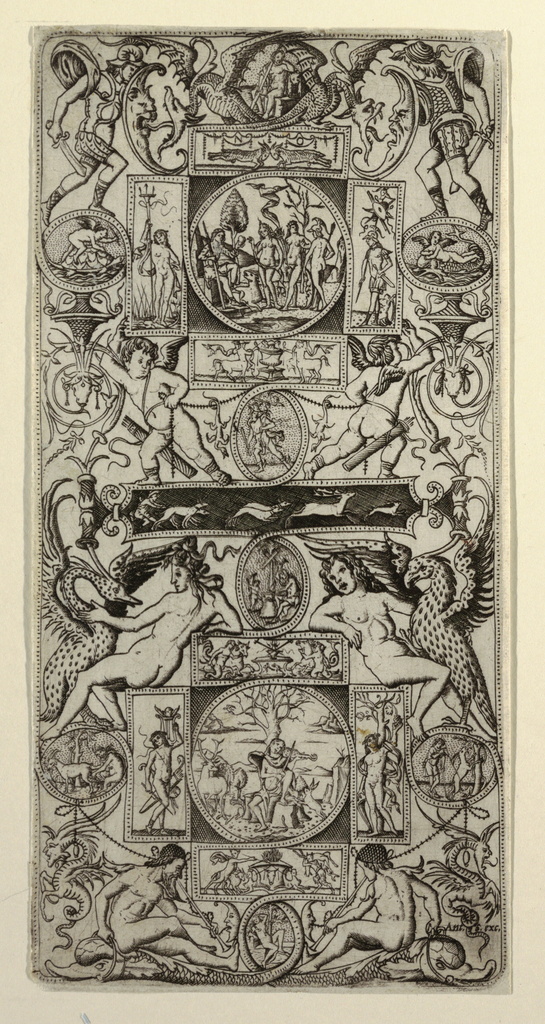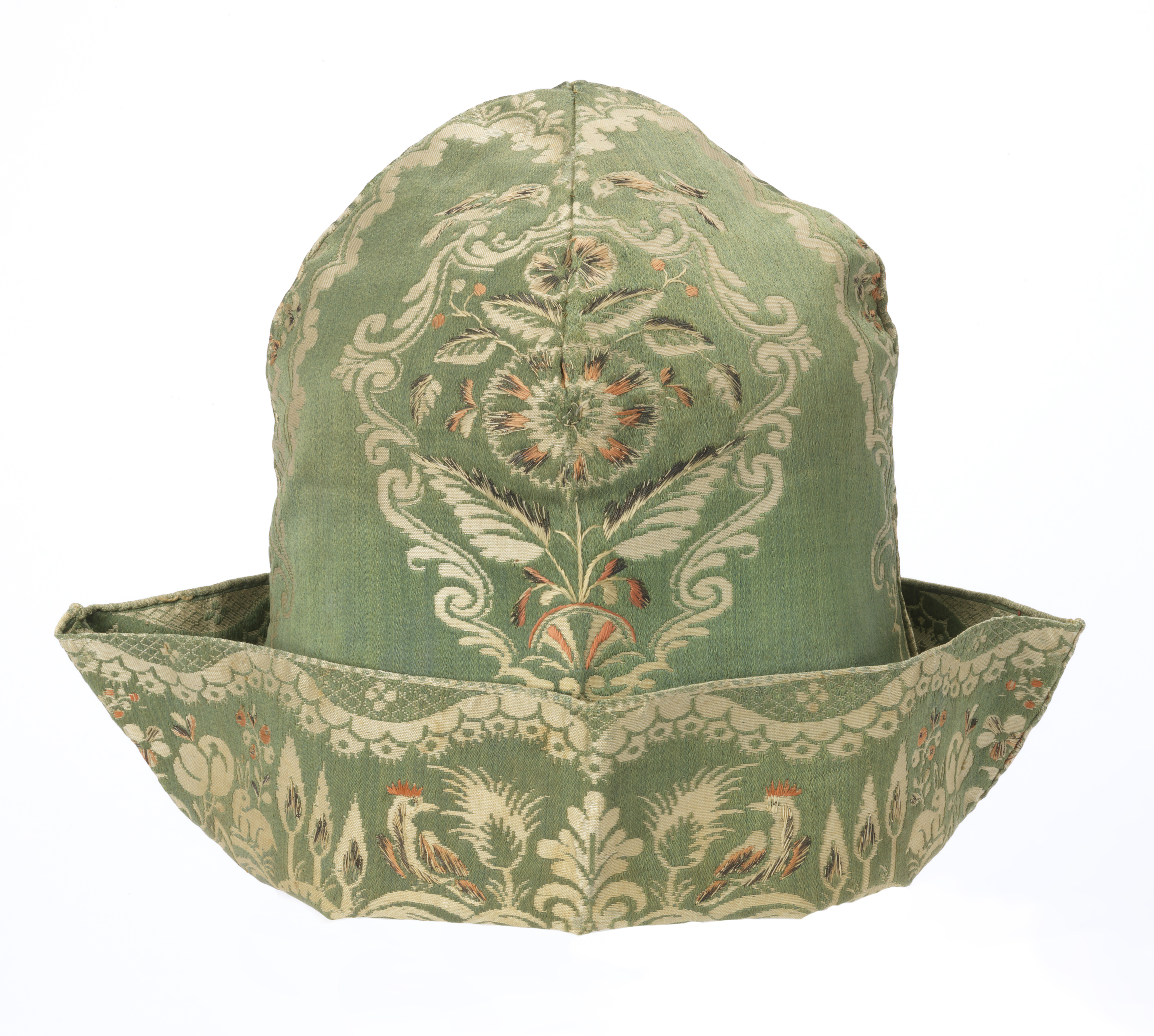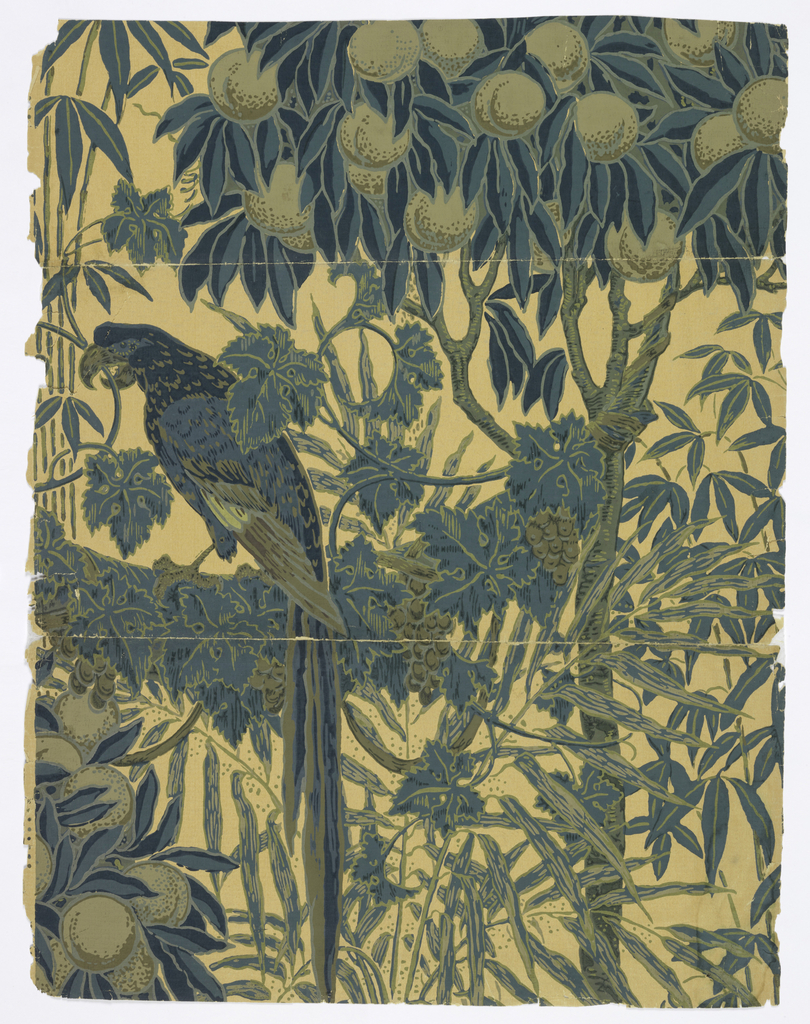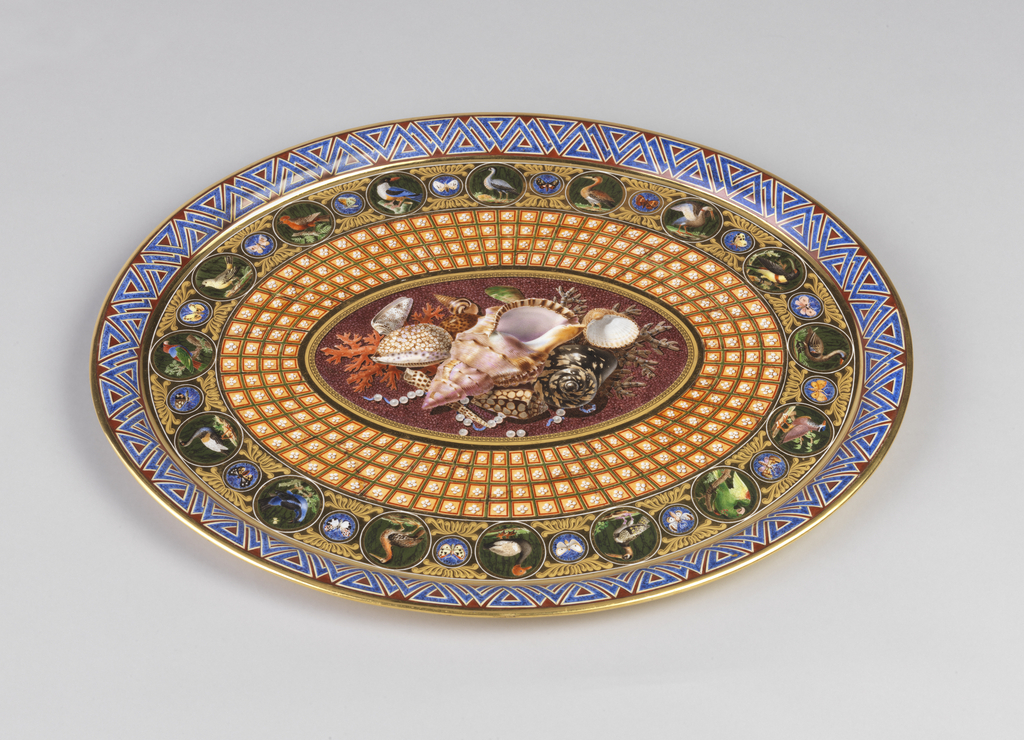The unstructured nature of this family register sampler, initialed “SS” and attributed to Sally Sacket (b. 1786), is typical of eighteenth-century examples. In contrast to the more organized genealogy samplers that appear after 1800, the text here is run together in continuous lines. Sally’s sampler is one of a group of three Westfield, Massachusetts, examples...
Some of the most common elements found in grotesque designs are pairs of contorted nudes known as ignudi (plural of ignudo). In many designs, figures assume postures that are variations or counterposes of their lateral mate’s. Like the grotesque motif itself, these compliant figures invite the artist to invent, exaggerate, and rearrange their parts into endless...
The intricate patterns on this cap precisely fit its shape, suggesting that the fabric was woven specifically for this purpose. Most likely produced professionally, the weaving, embroidery, and tailoring of caps such as this would have been completed in separate workshops. Wigs were common among men of many different social classes in eighteenth century France,...
“Crane’s facile handling of gorgeous birds…has never been excelled,” gushed A.V. Sugden and J.L. Edmondson in their “History of English Wallpaper,” written in 1926. Almost a century later, their compliment still rings true. “Macaw,” designed by Walter Crane for Jeffrey & Company, was originally created as a display piece for the manufacturer’s exhibit at the...
This oval tray represents the unique collaborative effort between Alexandre Brongniart, the director of Sèvres appointed in 1800, and his father, the designer Alexandre-Théodore Brongniart. The younger Brongniart’s passion for the natural world is reflected by the scientific precision of the biological species represented in finely painted enamel. Small roundels of exotic birds and butterflies...




